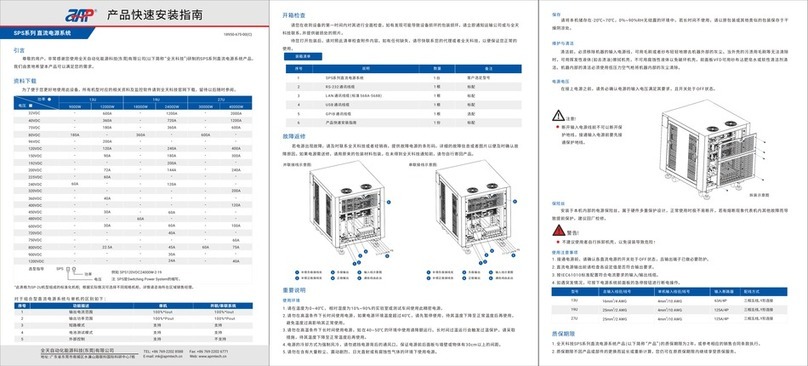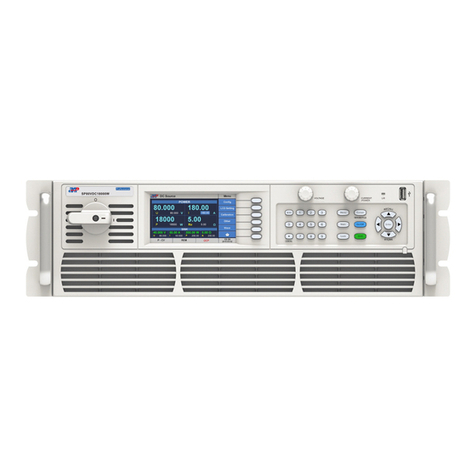
2
PROFESSIONAL INNOVATIVE BRANDING SERVICE
3
Contents Contents
5 Menu Operation ....................................................................................................................... 18
5.1 Menu Introduction ............................................................................................................ 18
5.1.1 Menu Structure ............................................................................................................ 18
5.1.2 Introduction to Front Panel Operations .................................................................... 20
5.1.3 Key Operations and Touch Screen Operation ........................................................... 20
5.2 Menu Operation ................................................................................................................ 23
5.2.1 Setting Item ................................................................................................................ 23
5.2.1.1 Output & More Setting ........................................................................................ 23
5.2.1.2 Measurement Setting ......................................................................................... 28
5.2.1.3 Waveform Viewer Setting .................................................................................. 32
5.2.1.4 Limitation Setting ............................................................................................... 32
5.2.2 Menu Setting ............................................................................................................... 33
5.2.2.1 Config Setting ..................................................................................................... 33
5.2.2.2 LCD Setting ......................................................................................................... 41
5.2.2.3 Calibration ........................................................................................................... 43
5.2.2.4 Other Setting ....................................................................................................... 43
5.2.3 Output Mode .............................................................................................................. 44
5.2.3.1 PLD Testing ......................................................................................................... 44
5.2.3.2 Harmonics .......................................................................................................... 49
5.2.3.3 IEC Standard ........................................................................................................ 56
5.2.3.4 Special Func ........................................................................................................ 74
5.2.4 Parallel/Series/3-Phase ............................................................................................. 79
5.2.5 Store/Recall ................................................................................................................ 79
5.2.6 Lock ............................................................................................................................. 81
6 Master-slave Mode Operation ................................................................................................ 82
6.1 Setting the Units as Slave ................................................................................................. 82
6.2 Setting the Unit as Master ................................................................................................ 83
6.2.1 Parallel System ........................................................................................................... 82
6.2.2 Series System ............................................................................................................. 86
6.2.3 3-Phase System .......................................................................................................... 87
6.2.4 Error List of Master-slave Mode ................................................................................ 91
6.2.5 Function Instruction ................................................................................................... 91
7 Calibration ............................................................................................................................... 93
7.1 Calibration Equipment Required ...................................................................................... 93
7.2 Calibration Procedure ....................................................................................................... 93
7.2.1 Volt Setting & Measurement Calibration .................................................................. 94
7.2.2 Current Measurement Calibration ............................................................................. 95
7.2.2.1 I Range High, AC Low Current Coefficient ......................................................... 96
7.2.2.2 I Range High, AC High Current Coefficient ........................................................ 96
7.2.2.3 I Range High, DC Low Current Coefficient ......................................................... 97
7.2.2.4 I Range High, DC High Current Coefficient ....................................................... 97
7.2.3 Saving Calibration Coefficient ................................................................................... 98
8 Installation ................................................................................................................................ 99
8.1 Product Dimensions .......................................................................................................... 99
8.2 Installing Rack Mount Handles ...................................................................................... 100
8.3 Installing the Optional Interface Cards .......................................................................... 100
8.4 Shelf Mounting Diagram of AC Source ......................................................................... 102
8.5 Input Connection ............................................................................................................. 102
8.6 Output Connection .......................................................................................................... 104
8.7 Remote Compensation .................................................................................................. 105
9 Troubleshooting .................................................................................................................... 106
10 Recycling and Disposal ....................................................................................................... 108
11 Contact Us ........................................................................................................................... 108
Appendix A Specifications ....................................................................................................... 109
Appendix B Fixed Waveforms .................................................................................................. 113
Appendix C Warranty ................................................................................................................ 123
PROFESSIONAL INNOVATIVE BRANDING SERVICE





























